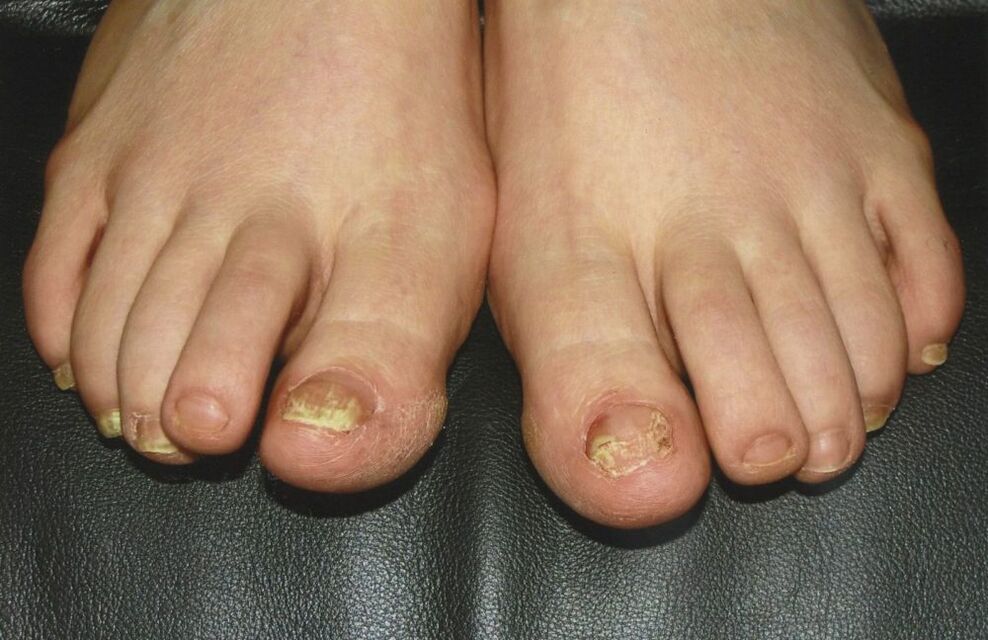
Mycoses are diseases caused by pathogenic microorganisms (fungi). The disease does not pose a mortal danger to a person, but it causes discomfort and is difficult to treat. Most often, people with weak immunity, hormonal imbalance and non-compliance with the rules of personal hygiene are more susceptible to infection. Fungus treatment sometimes lasts for 3 to 4 months using a whole range of medications. To increase the therapeutic effect of drugs, doctors prescribe traditional medicine prescriptions. The key to successful treatment is early diagnosis of the disease. In the initial stages, mycoses are more easily susceptible to the action of antifungal drugs.
Variety and symptoms of dermatomycosis
Science knows thousands of varieties of fungi, but only a few hundred of them are pathogenic for humans.
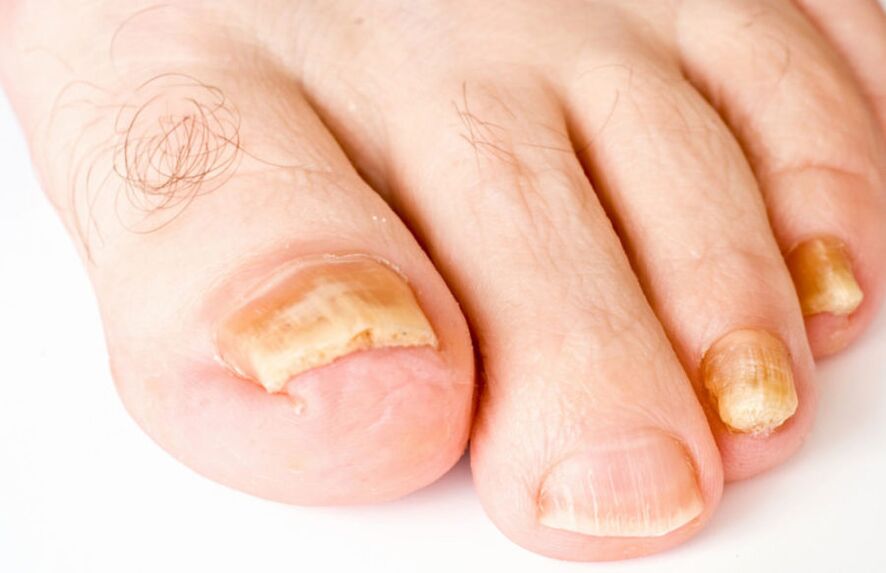
Types of microorganisms that cause athlete's foot:
- trichophytons;
- dermatophytes;
- candida.
The first signs of ringworm are quite difficult to recognize. The appearance of fungus on the legs depends on the type of microorganism that affects the soft tissues.
intertriginous form
The most common type of fungal infection. It occurs in summer, when the perspiration of the legs increases. The folds in the interdigital space are the first to suffer, then the infection captures the nearby areas and the nail plate.
First signs:
- dry skin between the fingers;
- cracks and wounds;
- intense itching and burning;
- peeling and discoloration of the epidermis.
scaly shape
This type of fungal infection affects the bottom of the foot. The skin appears rough, calluses, keratinized areas, deep cracks appear. When walking, a person feels pain.
The disease progresses quickly, captures the surrounding area and the nail plate. In advanced cases, the nail changes color, shape and begins to crumble.
Important!
At the first suspicion of a fungal infection, you should immediately see a doctor for examination and treatment.
dyshidrotic form
This type of fungus is rare. The first symptoms are multichambered watery vesicles with cloudy content on the skin. In place of ruptured formations, ulcers appear, which combine in continuous erosion.
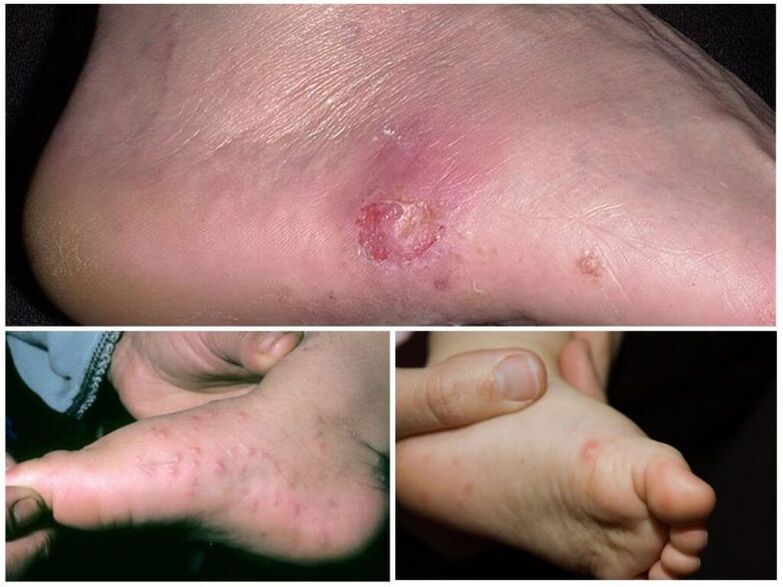
The main danger of this form of ringworm is the addition of concomitant infections. Pathogenic microorganisms penetrate the wounds, causing other dermatological diseases. In the absence of timely therapy, large areas of the legs are affected. It becomes very difficult to cure ringworm.
Causes
The main route of transmission of the infection is contact. If you don't follow basic personal hygiene rules, you can get infected through household items that the patient uses. Exfoliating particles from the epidermis, along with the causative agent of the disease, remain on shoes, towels, in the places of the infected. Once on the surface of a healthy person's skin, the fungus begins to actively multiply.
The spores of a pathogenic microorganism can survive in the environment for many months until they enter favorable conditions. Public places - swimming pools, showers, baths, saunas, changing rooms in gyms - pose a great danger of infection.
To avoid contagion, it is necessary to follow the hygiene rules: change your socks daily, wear comfortable shoes in which your feet do not sweat, after washing, dry the interdigital space well with a towel.
Fungus treatment with medication
An important factor in getting rid of cutaneous mycosis is the timely examination and treatment prescribed by the doctor.
Getting rid of the fungus is quite difficult. You will need a whole range of drugs for external and systemic action. First you need to determine the type of pathogen. This can only be done in a specialized laboratory.
ointments, creams
This type of drug has a high ability to penetrate deeply into the affected tissues, reaching the mycelium.
Antimycotic ointments are divided into 2 types:
- azoleSuppresses cell growth, destroys mycelium. The course of treatment with azole ointments usually lasts about a month;
- Allylamine. It has a harmful effect on yeast and mold fungi. This type of ointment has an antimycotic and anti-inflammatory effect. It refers to cheap and effective means. The course of therapy is usually 3 months.
Benefits of ointments:
- no harmful effects on the gastrointestinal tract and liver;
- local use allows maximizing the impact on the pathogen;
- versatility of use for the treatment of fungus on the skin and nails.
Features of the use of antifungal ointments:
- before applying medication, feet should be washed well and dried with a towel;
- the drug is applied to the affected surface with a thin layer, rubbing movements;
- avoid putting the drug on the mucous membranes - nose, eyes, mouth;
- follow the instructions for use and the recommendations of a dermatologist.
pills
For more effective treatment of advanced mycoses, systemic therapy is prescribed in conjunction with external topical preparations.
Tablets for the treatment of severe forms differ in the active substance:
- based on ketoconazole. It is prescribed for the treatment of superficial mycoses, which are not amenable to treatment with topical agents. Destroys yeasts, dimorphic fungi and dermatophytes;
- Terbinafine based. Acts on dermatophytes;
- Based on griseofulvin. Acts on dermatophytes. It prevents fungi from multiplying and destroys cell walls. This drug has increased toxicity, so modern medicine is gradually replacing it from the pharmacological market;
- based on fluconazole. Pills belong to the group of azoles. Help quickly get rid of the disease.
Along with the treatment of a fungal infection of the feet, drugs that stimulate the immune system and vitamin-mineral complexes are prescribed to better fight the disease.
Treatment at home with folk remedies
It is possible to remove the fungus with the help of alternative medicine recipes only in the initial stages or in combination with pharmacy products.
Important!
Before starting self-treatment at home, you should undergo an examination and consult your doctor.
Iodine
A universal antiseptic has not only a bactericidal, but also an antimycotic effect. It is recommended to lubricate the affected areas at night. Before the procedure, it is necessary to carry out a sensitivity test. To do this, a small amount of iodine is applied to the crook of the elbow. If after a few hours there is no redness of the skin, burning or itching, you can use this method. Before going to bed, a foot bath is given, after which the skin is thoroughly cleaned with a terry towel. In order not to cause chemical burns, iodine must be diluted with medical alcohol 1: 1. With a cotton swab, a thin layer of the solution is evenly applied to the places affected by the fungus. Cotton socks are worn on top. Also, for prevention, nail plates are processed.
You can make an effective "talker" based on iodine:
- Grind into powder 14 antifungal tablets;
- Mix with 100 ml of Dimexide 1% and leave in a dark place for a day;
- Add 10 ml of iodine and vinegar essence.
Store the resulting mixture in the refrigerator and stir well before using. It should be applied to the affected areas of the skin with a cotton swab 1-2 times a day. The course of treatment is 1 month.
Hydrogen peroxide
Another well-known antiseptic that helps fight the manifestations of fungus on the legs. The solution is used in the form of applications applied to problem areas. Ten minutes twice a day will be enough to overcome the mycoses in the initial stages in 5-10 days.
Baths for cooking legs with the addition of peroxide are considered useful. It is diluted 1: 1 with water. The solution is not enough, but it is only necessary to place the affected part of the foot. The procedure takes 30 to 40 minutes. The liquid should not get into healthy skin, because it strongly dehydrates the soft tissues.
Celandine
The medicinal plant successfully treats many skin diseases, including mycoses. Decoctions are used for compresses and baths. If you can get a freshly picked plant, you can try to cure the fungus with fresh juice.
To do this, tear off the bush, wash it under running water. Prepare the legs - get out of the steam, the scales are removed. Yellow juice appears at the cut of the stem. They lubricate the affected surfaces. With self-treatment with celandine at home, you must be extremely careful. This plant is poisonous. Its juice can cause severe skin burns.
For steaming, a decoction of 5 tbsp is prepared. I. herbs per 1 liter. boiling water. The solution is infused in a container with a tightly closed lid for 20 minutes. After that, a foot bath is done.
Apple vinegar
An acidic environment will help to remove the fungus, in which it cannot multiply and exist. Apple cider vinegar is used in the form of foot baths and applications.
If the affected area is small, just soak a cotton ball or a piece of cotton cloth with an aggressive substance. In case of extensive spread, healthy areas of the skin are smeared with a greasy baby cream for protection and a sock soaked in vinegar is put on.
With it, acidify the water for foot baths. After such cooking, the skin is completely dried and other drugs of natural origin or pharmaceutical preparations are applied.
Other home treatments
Traditional medicine offers a variety of tips to get rid of the fungus and its manifestations. These funds are easily prepared regardless of the components available in any home.
Homemade ointments:
- Mix equal proportions of yellow sulfur, copper sulfate and goose fat in an enameled container. Bring to a boil over low heat and transfer to a glass jar. The ointment is stored in the refrigerator. Apply daily in the morning and at night on the affected areas of the skin;
- Add wood ash to the goose fat. Stir until smooth. Lubricate problem areas with a mixture twice daily;
- Mix the butter with the minced garlic. The resulting mass is applied to the affected skin at night.
Ointments prepared according to the recipe of traditional medicine have a positive effect only in the case of the initial stage of the disease. With advanced mycoses, they are used in combination with tablet preparations.
Compresses:
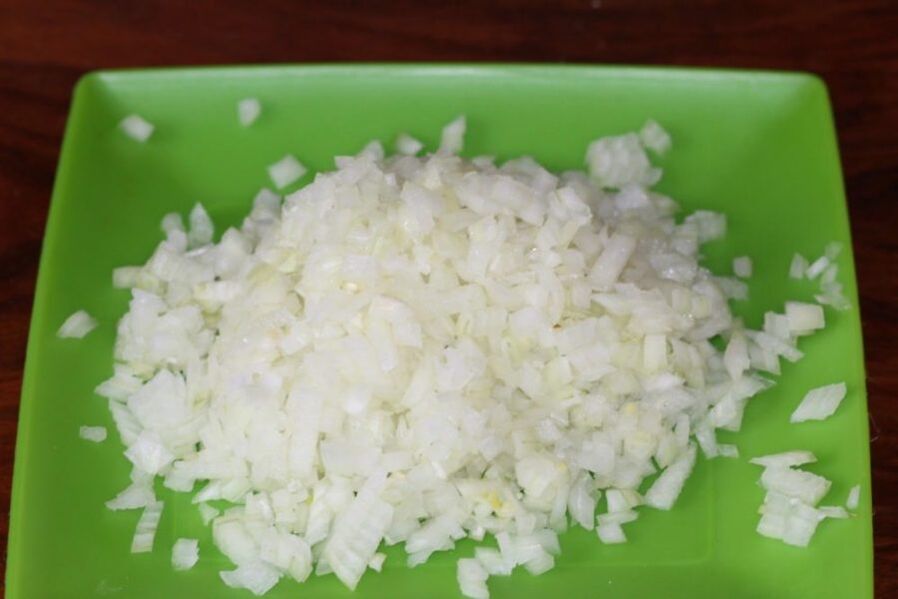
- Onion garlic. One medium onion and 2 cloves of garlic are crushed into a pulp. The mixture is placed in a thick layer on the skin, covered with a plastic bag, fixed with a bandage. A cotton sock is placed on top. The procedure is performed before going to bed. In the morning, the compress is removed and the feet are washed with warm soapy water. This method will help to cope with the disease in 7-10 days;
- Celandine with tea tree oil. 1st. I. the chopped herbs are mixed with oil until a pasty substance is obtained. It is applied abundantly to the area where the fungus is located and isolated, as in the previous recipe;
- Herbal compress. In a pan, mix 400 ml of sunflower oil, 1 tbsp. I. herbs comfrey, peppermint, marigold and radiola. Heat the mixture over low heat to 50-60 degrees. Insist on a cool, dark place during the day. Remove the dry ingredients through a sieve or cheesecloth. With the oil mixture, compresses are made in the evening for 1-2 hours. The safe action of the recipe allows you to use it in childhood.
Important!
Before any medical procedure, you should steam your legs for 15-20 minutes.
Trays:
- The most common and simple solution for steaming is 1 tbsp. I. table salt or sea salt, 1 tbsp. I. sodium bicarbonate and 1 liter. Water. The procedure takes 15 minutes. Then the legs are washed with warm running water and dried;
- Brew a strong coffee, let it cool and soak your feet in it for 5 minutes. After that, rinse with water;
- Pour two liters of boiling water over a mixture of herbs: 2 tbsp. I. chamomile flowers, horsetail, flax seeds. After cooling to a tolerable temperature, you should soak your feet in the resulting broth for 15 minutes.
Prevention
Any disease is easier to prevent than to cure. Therefore, in order not to get sick, you must take some precautions.
Tips to help prevent infection:
- wear natural, high-quality shoes in which the foot does not sweat;
- in places of public visitation (baths, saunas, showers, swimming pools, changing rooms) the use of replaceable rubber slippers is mandatory;
- wear only personal shoes;
- maintain immunity.
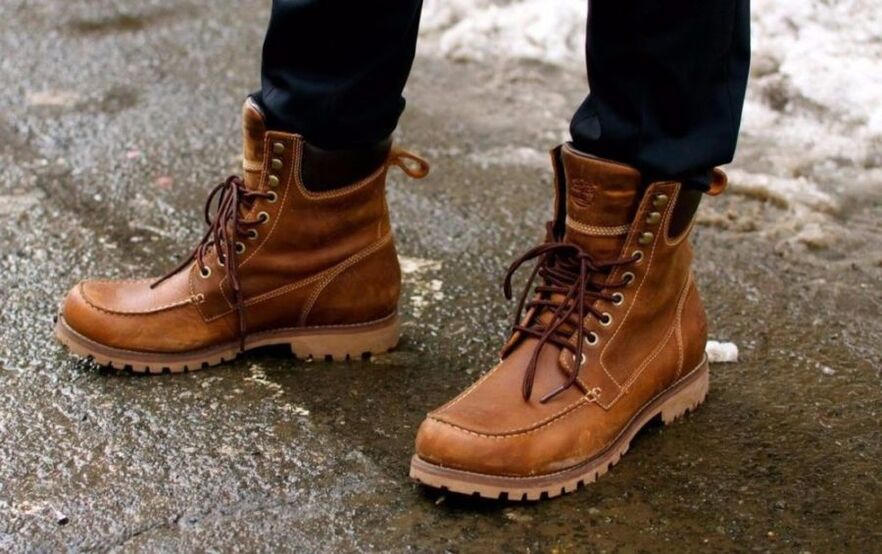
Foot fungus is an insidious disease. It is quite easy to get infected, but difficult to get rid of. Usually people start the disease due to the fact that ringworm does not appear immediately. You should be aware of your body and seek medical help at the first suspicious symptoms.















